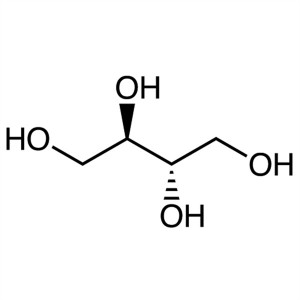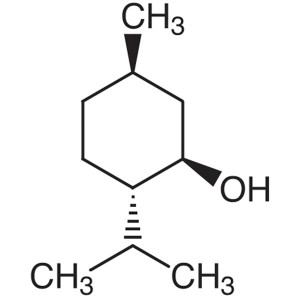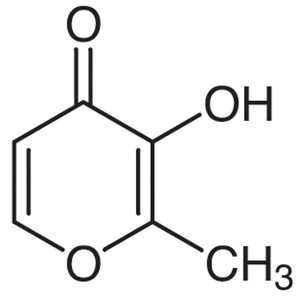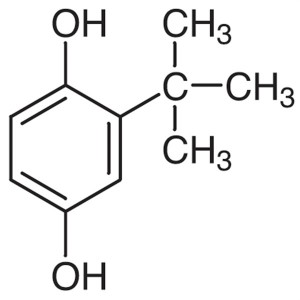meso-Erythritol CAS 149-32-6 Assay 99.5~100.5% Factory Food Additive
Shanghai Ruifu Chemical Co., Ltd. is the leading manufacturer of meso-Erythritol (CAS: 149-32-6) with high quality, production capacity 30000 tons per year. Ruifu Chemical can provide worldwide delivery, competitive price, small and bulk quantities available. Purchase meso-Erythritol, Please contact: alvin@ruifuchem.com
| Chemical Name | meso-Erythritol |
| Synonyms | Erythritol; 1,2,3,4-Butanetetrol; meso-1,2,3,4-Tetrahydroxybutane; i-Erythritol |
| Stock Status | In Stock, Production Capacity 30000 Tons per Year |
| CAS Number | 149-32-6 |
| Molecular Formula | C4H10O4 |
| Molecular Weight | 122.12 g/mol |
| Melting Point | 119.0~123.0℃(lit.) |
| Boiling Point | 329.0~331.0℃(lit.) |
| Density | 1.451 g/cm3 |
| Sensitive | Hygroscopic. Air Sensitive, Light Sensitive, Moisture Sensitive |
| Water Solubility | Soluble in Water, Almost Transparency |
| Storage Temp. | Cool & Dry Place |
| COA & MSDS | Available |
| Shelf Life | 2 Year When Properly Stored |
| Brand | Ruifu Chemical |
| Items | Inspection Standards | Results |
| Appearance | White Crystalline Powder or Granular | White Crystalline Granular |
| Assay (on Dry Basis) | 99.5~100.5% | 99.92% |
| Melting Point | 119.0~123.0℃ | 119.8~121.7℃ |
| Loss on Drying | ≤0.20% | 0.05% |
| Residue on Ignition | ≤0.10% | 0.005% |
| Heavy Metals (Pb) | ≤1.0 mg/kg | 0.0076mg/kg |
| Lead (Pb) | ≤0.50 mg/kg | <0.085 mg/kg |
| Arsenic (As) | ≤0.30 mg/kg | <0.041 mg/kg |
| Reducing Sugars | ≤0.30% | <0.30% |
| Ribitol and Glycerol | ≤0.10% | <0.01% |
| Cont of Bacteria | ≤300 cfu/g | <10 cfu/g |
| Yeast and Moulds | ≤100 cfu/g | <10 cfu/g |
| Coliform | ≤30 cfu/g | Negative |
| Pathogens | Negative | Negative |
| Shigella | Negative | Negative |
| Staphylococcus Aureus | Negative | Negative |
| pH Value | 5.0~7.0 | 6.84 |
| Conclusion | The product has been tested & complies with the given specifications | |
Package: Bottle, Aluminium foil bag, 25kg/Cardboard Drum, or according to customer's requirement.
Storage Condition: Store in a tightly closed container. Store in a cool, dry and well-ventilated warehouse away from incompatible substances. Protect from light and moisture.
Shipping: Deliver to worldwide by air, by FedEx / DHL Express. Provide fast and reliable delivery.
How to Purchase? Please contact Dr. Alvin Huang: sales@ruifuchem.com or alvin@ruifuchem.com
15 Years Experience? We have more than 15 years of experience in the manufacture and export of a wide range of high quality pharmaceutical intermediates or fine chemicals.
Main Markets? Sell to domestic market, North America, Europe, India, Korea, Japanese, Australia, etc.
Advantages? Superior quality, affordable price, professional services and technical support, fast delivery.
Quality Assurance? Strict quality control system. Professional equipment for analysis include NMR, LC-MS, GC, HPLC, ICP-MS, UV, IR, OR, K.F, ROI, LOD, MP, Clarity, Solubility, Microbial limit test, etc.
Samples? Most products provide free samples for quality evaluation, shipping cost should be paid by customers.
Factory Audit? Factory audit welcome. Please make an appointment in advance.
MOQ? No MOQ. Small order is acceptable.
Delivery Time? If within stock, three days delivery guaranteed.
Transportation? By Express (FedEx, DHL), by Air, by Sea.
Documents? After sales service: COA, MOA, ROS, MSDS, etc. can be provided.
Custom Synthesis? Can provide custom synthesis services to best fit your research needs.
Payment Terms? Proforma invoice will be sent first after confirmation of order, enclosed our bank information. Payment by T/T (Telex Transfer), PayPal, Western Union, etc.
Hazard Symbols Xi - Irritant
Risk Codes 36/37/38 - Irritating to eyes, respiratory system and skin.
Safety Description
S26 - In case of contact with eyes, rinse immediately with plenty of water and seek medical advice.
S36 - Wear suitable protective clothing.
WGK Germany 3
RTECS KF2000000
FLUKA BRAND F CODES 3-10
TSCA Yes
HS Code 2905499000
meso-Erythritol (CAS: 149-32-6) is a natural constituent of several foods and beverages in levels sometimes exceeding 1 g/kg. Depending on the concentration used, erythritol is approximately 60 % as sweet as sucrose. It is noncariogenic and not metabolized in the human body which means that it is more or less calorie-free. In the European Union, erythritol is approved as E 968 for a large number of food applications. It is GRAS in the United States and also approved in many other countries.
meso-Erythritol is a sugar alcohol (polyol). The sweetness of erythritol is low, the sweetness of erythritol is only 60%-70% of sucrose, the entrance has a cool taste, the taste is pure, and there is no post-bitterness. It can be used in combination with high-intensity sweeteners to inhibit its Undesirable flavors of high-intensity sweeteners. Erythritol has high stability, is very stable to acid and heat, and has high acid and alkali resistance. It will not decompose and change at temperatures below 200℃, and will not undergo Maillard reaction to cause discoloration. The heat of dissolution of erythritol is high: erythritol has an endothermic effect when dissolved in water, and the heat of dissolution is only 97.4kJ/kg, which is higher than the endothermic degree of glucose and sorbitol, and has a cooling feeling when eating. The solubility of erythritol at 25℃ is 37% (W/W). With the increase of temperature, the solubility of erythritol increases, and it is easy to crystallize and separate out crystals. Erythritol is very easy to crystallize, but it will not absorb moisture in a 90% humidity environment. It is easy to be crushed to obtain a powdery product, which can be used on the surface of food to prevent food from absorbing moisture and deteriorating.
meso-Erythritol, belonging to the class of sugar alcohols, is identified in a variety of food products, fruits, vegetables, beverages and dietary supplements. It is known as a low glycemic food additive and plays an important role as a sweetener for diabetic patients, since it does not have glycemic or insulinemic effect due to its ability to not get metabolized but get absorbed in the small intestine. It is also reportedly used as a sugar substitute in toothpaste, chewing gums, confectionery food products, etc.
Application field
1. Drinks In recent years, erythritol has been used in the development of new zero-calorie and low-calorie beverages. Erythritol can increase the sweetness, body and smoothness of drinks, while reducing bitterness, and can also mask other odors and enhance the flavor of drinks. Erythritol can also be used in refreshing solid drinks, because erythritol absorbs a lot of heat when it dissolves.
2. Baked goods
Erythritol is a proven ingredient for higher quality functional or low-calorie bakery products. It can not only replace sucrose physically and chemically but also bring health benefits, and baked products using erythritol have better structural compactness and softness than products that also use sucrose as raw materials, And it has different melt-in-the-mouth and subtle color differences. The erythritol used in baked goods should preferably be powdered or crystallized with a fine particle size (<200μm), and the fine particles will bring a smooth and round taste to the product.
3. Additives
Erythritol can also be used to produce good quality bakery product additions such as jams, cream, butter icing and some surface decorations.
A. Adding erythritol to jam can enhance the natural fruity index.
B. Adding erythritol to cream icing (full fat) will not only reduce calories but also bring a refreshing taste; when the product uses erythritol, maltitol liquid and aspartame at the same time, the energy value can be reduced by nearly 50%.
4. Candies
The current candy and chocolate market has also extended from the early use of sucrose as the basic raw material to the new low-sugar and low-calorie sugar-based products. In recent years, functional sugar products have been hyped in full swing in the market and have become the current international The consumption hotspot and development focus of the candy market, the market potential is huge. After long-term practical research, it has been proved that the new functional raw material erythritol fully meets the requirements. The taste of erythritol is the same as that of sucrose, and there is no need to add strong sweeteners such as aspartame or saccharin. The resulting candies are cooler and cooler than other "non-sucrose" candies, with pure sweetness and no unpleasant aftertaste
5. Chocolate
Erythritol can easily replace sucrose in the product and reduce the energy of chocolate by 34%. No other sugar alcohol can provide such energy reduction, and endow the product with a cool taste and non-cariogenic properties. Due to its low hygroscopicity, erythritol helps to overcome the blooming phenomenon of other sugars when making chocolate.
6. Pharmaceutical industry
The properties of erythritol, such as anti-caries, anti-oxidation, moisture retention and non-flammability, make its application in the fields of medicine and daily chemicals continue to expand.
meso-Erythritol is a naturally occurring noncariogenic excipient used in a variety of pharmaceutical preparations, including in solid dosage forms as a tablet filler, and in coatings. It has also been investigated for use in dry powder inhalers.It is also used in sugar-free lozenges,and medicated chewing gum. meso-Erythritol can also be used as a diluent in wet granulation in combination with moisture-sensitive drugs. In buccal applications, such as medicated chewing gums, it is used because of its high negative heat of solution which provides a strong cooling effect. meso-Erythritol is also used as a noncaloric sweetener in syrups; it is used to provide sensorial profile-modifying properties with intense sweeteners; and it is also used to mask unwanted aftertastes. meso-Erythritol is also used as a noncariogenic sweetener in toothpastes and mouthwash solutions.
DEFINITION
Erythritol is obtained by fermentation of starch enzyme hydrolysate (from starches such as wheat and corn). It is obtained from the fermentation broth of suitable osmophilic yeasts such as Moniliella pollinis or Trichosporonoides megachiliensis. It contains NLT 96.0% and NMT 102.0% of Erythritol (C4H10O4), calculated on the anhydrous basis.
IDENTIFICATION
• A. INFRARED ABSORPTION <197K>
• B. MELTING RANGE OR TEMPERATURE <741>: 119.0~123.0°C
ASSAY
• PROCEDURE
Mobile phase: 0.01% sulfuric acid
System suitability solution: 0.05 mg/mL each of USP Erythritol RS and glycerol
Standard solution: 50 mg/mL of USP Erythritol RS
Sample solution: 50 mg/mL of Erythritol
Chromatographic system
(See Chromatography <621>, System Suitability.)
Mode: LC
Detector: Refractive index
Column: 7.8-mm × 30-cm; packing L17
Column temperature: 70°
Flow rate: 0.8 mL/min
Injection size: 10 µL
System suitability
Samples: System suitability solution and Standard solution [NOTE-The relative retention times for erythritol and glycerol are about 1.0 and 1.1, respectively.]
Suitability requirements
Resolution: NLT 2.0 between erythritol and glycerol, System suitability solution
Relative standard deviation: NMT 2.0%, Standard solution
Analysis
Samples: Standard solution and Sample solution [NOTE—Record chromatograms for over a period of three times the retention time of erythritol.]
Calculate in percentage of erythritol (C4H10O4) in the portion of Erythritol taken:
Result = (rU/rS) × (CS/CU) × 100
rU = peak response from the Sample solution
rS = peak response from the Standard solution
CS = concentration of USP Erythritol RS in the Standard solution (mg/mL)
CU = concentration of Erythritol in the Sample solution (mg/mL)
Acceptance criteria: 96.0%-102.0% on the anhydrous basis
IMPURITIES
• RESIDUE ON IGNITION <281>: NMT 0.1%
• LIMIT OF LEAD
Standard lead solution: Prepare as directed under Heavy Metals <231>, Special Reagents
Sample solution: Dissolve 20.0 g of Erythritol in diluted acetic acid, and dilute with the same medium to 100 mL. Add 2.0 mL of a saturated ammonium pyrrolidinedithiocarbamate solution (10 mg/mL of ammonium pyrrolidinedithiocarbamate) and 10.0 mL of methyl isobutyl ketone, and shake for 30 s. Protect from bright light. Allow the two layers to separate, and use the methyl isobutyl ketone layer.
Standard solutions: Prepare as directed for the Sample solution, except prepare three solutions by adding 0.5, 1.0, and 1.5 mL of Standard lead solution in addition to the 20.0 g of Erythritol.
Blank solution: Prepare as directed for the Sample solution, omitting Erythritol.
Instrumental conditions
(See Spectrophotometry and Light-Scattering <851>.)
Mode: Atomic absorption spectrophotometry, using methyisobutyl ketone previously treated as described under Sample solution, but without the sample added
Analytical wavelength: 283.3 nm
Lamp: Lead hollow-cathode
Flame: Air–acetylene
Analysis
Samples: Sample solution and Standard solutions
Introduce the Sample solution and each of the three Standard solutions into the instrument. Record the steady absorbance reading. Plot the absorbance readings against the known concentrations of added lead (in µg), and draw a straight line. Extrapolate the line until it meets the concentration axis, which is equal to the concentration, in ppm, of lead in the sample.
Acceptance criteria: NMT 0.5 ppm
• RELATED COMPOUNDS
Mobile phase, System suitability solution, Standard solution, and Sample solution: Proceed as directed in the Assay.
Standard solution: Transfer 2.0 mL of the Standard solution from the Assay to a 100-mL volumetric flask, and dilute with water (1 mg/mL of erythritol).
Chromatographic system: Proceed as directed in the Assay except use an Injection size of 20 µL.
Analysis
Samples: Sample solution and Standard solution
Calculate the percentage of each impurity found:
Result = (rU/rS) × (CS/CU) × 100
rU = peak response from the Sample solution
rS = peak response of erythritol from the Standard solution
CS = concentration of USP Erythritol RS in the Standard solution (mg/mL)
CU = concentration of Erythritol in the Sample solution (mg/mL)
Acceptance criteria
Individual impurities: NMT 2.0%
Total impurities: NMT 2.0%
SPECIFIC TESTS
• MICROBIAL ENUMERATION TESTS <61> and TESTS FOR SPECIFIED
MICROORGANISMS <62>: The total aerobic microbial count using the Plate Method is NMT 1000 cfu/g, and the total combined molds and yeasts count is NMT 100 cfu/g. It meets the requirements of the tests for absence of Salmonella species and Escherichia coli.
• LOSS ON DRYING <731>: Dry an 8-g sample at 105° for 4 h: it loses NMT 0.2% of its weight.
• WATER DETERMINATION, Method I <921>: NMT 0.5%
• CONDUCTIVITY
Sample solution: 200 mg/mL in water
Analysis: Using an appropriate conductivity meter, choose a conductivity cell that is appropriate for the properties and conductivity of the solution to be examined. Use a certified reference material,1 for example, a solution of potassium chloride, that is appropriate for the measurement. The conductivity value of the certified reference material should be near the expected conductivity value of the solution to be examined. After calibrating the apparatus with a certified reference material solution, rinse the conductivity cell several times with water and at least twice with the aqueous solution to be examined. Measure the conductivity of the solution at a temperature of 20° while stirring gently with a magnetic stirrer.
Acceptance criteria: NMT 20 µS/cm
ADDITIONAL REQUIREMENTS
• PACKAGING AND STORAGE: Preserve in well-closed containers. Store at room temperature.
• USP REFERENCE STANDARDS <11>
USP Erythritol RS





